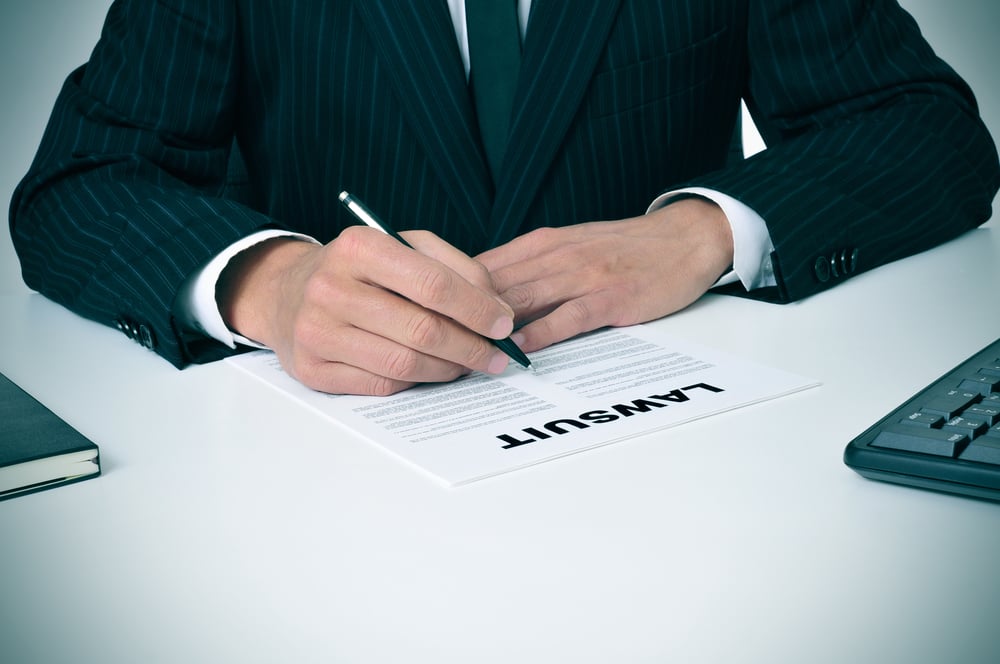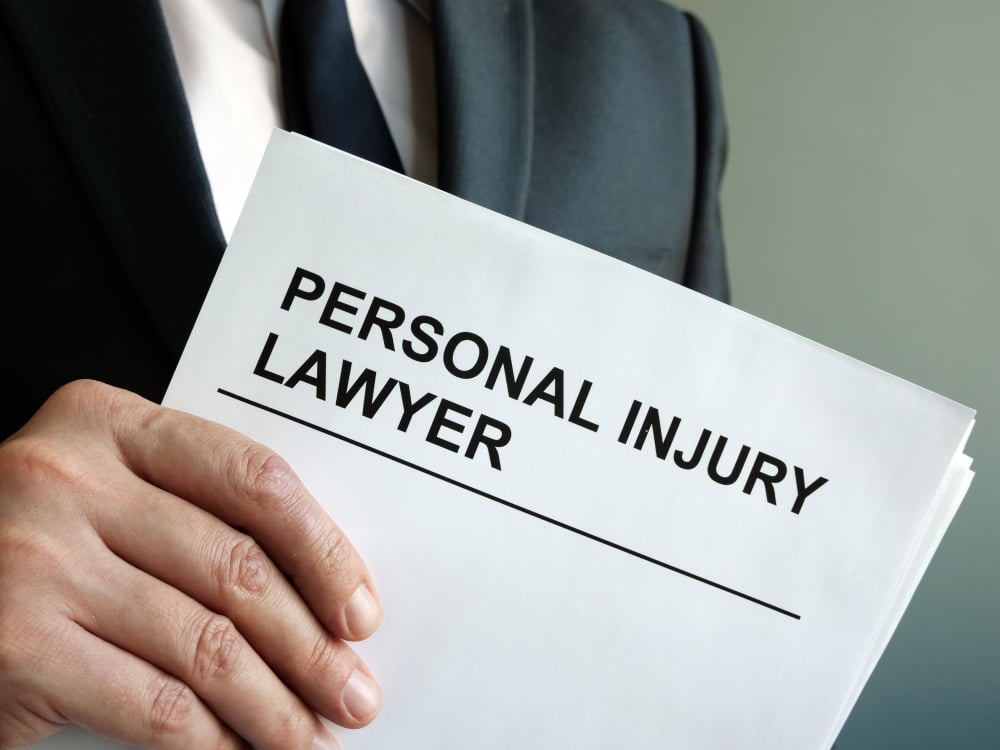Any time you suffer an injury in an accident because of the negligence or intentional wrongdoing of another party, you should consider contacting personal injury lawyers to help recover medical bills or other damages. No two personal injury cases are the same, and the legal process is complex with many laws governing deadlines and qualifications.
You are completely within your legal rights to handle your case alone, but having a team of professionals to offer guidance and handle insurance adjusters during personal injury claims relieves a heavy burden. If you are unsure about hiring personal injury lawyer, consider some of the circumstances that indicate you may need one.
Types of Personal Injury Cases
Personal injury cases fall under tort law. A tort is “an act or omission that gives rise to injury or harm to another and amounts to a civil wrong for which courts impose liability.” If someone injures you either directly or through negligent action, you have the right to pursue compensation either through an insurance claim or, in some cases, through the court system.

A personal injury firm commonly deals with cases involving:
- Auto accident injury. Approximately 4.4 million people suffer injuries from car accidents in the U.S. every year, and more than 38,000 people die. This is the most common type of personal injury case, and it may involve car accidents, motorcycle accidents, bicycle accidents, or pedestrian accidents. Auto accident cases often devolve into a back and forth about fault, but the best personal injury lawyers have experience in the negotiation process.
- Workplace injuries. When a business fails in maintaining a standard of safety in the workplace, employees sometimes suffer avoidable injuries. When the injuries are substantial, a permanent disability sometimes occurs. Employers have a duty of care to employees, and employees should seek compensation when the company neglects that duty.
- Slip-and-fall accidents. Slip-and-fall cases generally fall under the rule of law called premises liability, which states that property owners have a duty to maintain safe conditions for anyone legally present on their property. Seniors are the most at-risk demographic for slip and fall accidents resulting in serious injury.
- Wrongful death. If one party’s negligence leads to the death of another, a surviving loved one may file a wrongful death claim and request compensation for medical and funeral expenses as well as non-economic damages, such as pain and suffering or emotional distress.
- Medical malpractice. Injuries from medical malpractice may include misdiagnosis, medication errors, surgical errors, delayed diagnosis, failure to treat, and childbirth injuries among many others.
- Product liability. When a manufacturer injurers a buyer through a product defect or design flaw, accident victims have the right to sue for compensation.
- Assault. Assault is not the result of an accident, but many victims of assault file civil personal injury lawsuits to pursue compensation for injuries sustained.
A personal injury law firm typically has attorneys with ample experience in each of these types of cases. Some work more frequently in specific areas, but any personal injury attorney understands the state laws that govern these cases.
6 Circumstances That Indicate You May Need To Contact a Personal Injury Attorney in New York, NY

If you have not yet decided whether or not to contact a personal injury law firm, consider the six circumstances listed below. These situations are common in personal injury cases, and a personal injury lawyer can guide you through the next steps.
1. You Sustained a Very Serious Injury in the Accident
The types of injuries and relative severity vary in personal injury cases. Some injuries are minor and require minimal medical treatment while others are traumatic and result in permanent disabilities. If you sustained a very serious injury in an accident, you may be eligible for more compensation than you think. If your your injuries came from a car accident, you may have the opportunity to pursue compensation for damages not covered under your no-fault insurance.
Some common serious injuries incurred from a personal injury incident include:
- Traumatic brain injuries (TBI): most common in car accidents and workplace injuries
- Back injuries: common in car accidents, slip and fall accidents, and workplace accidents
- Spinal cord injuries or paralysis: common in car accidents
- Infections: common in medical malpractice cases
- Fractures and broken bones: common in slip and fall accidents, car accidents, and workplace accidents
- Overdose or allergic reaction: common in medical malpractice and product liability
- Death: could happen in any form of personal injury case
You may contact an attorney if you suffer any type of injury, minor or severe, but for a serious injury, you want the best personal injury attorneys that know how to fight for the highest possible settlement.
2. Your Accident Involved a Government Agency
If your accident involved a government entity, you should call a personal injury attorney as soon as possible. The deadline to file a claim against the government is shorter than the statute of limitations for other personal injury cases, and most agencies have protection from liabilities. When the process is more complicated, you need an attorney from a personal injury law firm to make sure you follow the proper procedure.
3. The Other Party Denies Liability
When you file a personal injury lawsuit, the burden of proving the liability of the other party falls on you. If the other party denies responsibility and you cannot prove otherwise, you cannot recover compensation. If you hire an attorney, he or she will conduct a thorough investigation into your accident. A personal injury lawyer may have access to experts, such as an accident reconstruction professional, to help collect any possible evidence to prove the other party’s liability.
4. The Other Party Argues That You Share Blame for the Accident

A common tactic used by the defendant in a personal injury case is arguing that you share blame for the accident. Any personal injury law firm is familiar with this tactic. Some common examples of shared blame arguments are:
- You drove over the speed limit in your motorcycle accident, and that contributed to the severity of your injuries.
- The area of the grocery store in which you fell is off-limits to customers.
- You looked down at your phone as you crossed the street and missed the “do not walk” signal.
- You did not abide by the safety rules from your workplace training and therefore, put yourself at risk for injury.
In cases where the defendant or insurance adjuster knows that they cannot shift all of the blame onto you, they will often shift some blame to lessen the amount of the settlement or award under the comparative negligence rule of New York.
5. The Accident Involves Multiple Parties
Personal injury cases that involve multiple parties are significantly more complex. This is common in medical malpractice cases, product liability claims, and construction accidents. Car accidents with only two vehicles involved already present difficulties in proving liability, but auto accidents with multiple cars generally require the investigation of a personal injury attorney. A personal injury law firm with experience in cases involving multiple parties can likely show you evidence of past cases in which they recovered higher compensation for their client.
6. The Insurance Company Acts in Bad Faith
All insurance adjusters have one common goal: to protect the best interest of the company above all else. Sometimes they deal dishonestly in order to avoid making payouts, particularly large ones. These actions fall under the name “bad faith tactics”, and someone not familiar with these tactics may not recognize them.
Some examples of commonly used bad faith tactics are:
- Refusing or ignoring your reasonable request for documentation
- Denying a valid claim without providing a reason
- Delaying payment of a valid claim
- Failing to conduct an investigation into your claim promptly or even at all
- Misrepresenting the law or policy language
- Offering you much less than the actual worth of your claim
- Being rude and aggressive or using threatening language
- Delaying or denying decisions on requests for medical treatment
- Refusing to payout on a valid claim
A personal injury lawyer recognizes these tactics right away and knows the legal measures to use to protect you from them. Additionally, insurers often behave more professionally when working with an attorney.
Personal Injury Laws in New York

The laws that govern personal injury cases vary from state to state. In New York, the laws you should understand include the statute of limitations, the rule of comparative negligence, no-fault insurance rules, and the laws that cover injury claims filed against a government entity.
Statute of Limitations
A statute of limitations is a law that places a deadline on the time you have to file a claim or lawsuit after an incident. For most personal injury cases in New York, the statute of limitations is three years from the time of the accident. If you do not file within the allotted timeframe, you should assume that the court will immediately dismiss your case.
The statute of limitations for medical malpractice in New York is two and a half years, and the clock starts ticking upon completion of the medical treatment. The deadline for medical malpractice against minors does not begin until the child’s eighteenth birthday, but it cannot extend beyond 10 years from the time the malpractice occurred.
Pure Comparative Negligence Rule
Any personal injury law firm or personal injury attorney is no doubt well-versed in New York’s comparative negligence rule. Comparative negligence is the rule that applies when both parties share fault in a personal injury case, and it states that the percentage of fault held by the plaintiff equals the percentage deducted from the awarded compensation. There are two types:
- Modified comparative negligence states that the plaintiff loses eligibility for compensation if he or she is more than 50% responsible.
- Pure comparative negligence states that the plaintiff is eligible for compensation regardless of the percentage of fault.
New York follows the pure comparative negligence rule. Therefore, if a jury awards you $50,000 and finds you 30% at fault in your personal injury case in New York, a 30% deduction applies to your award.
No-Fault Insurance Rules

New York is a no-fault state, and this directly affects car accident claims. The state mandates that all drivers have personal injury protection (PIP) insurance on registered vehicles. In the event of a car accident, your PIP insurance covers the damages associated with your injuries and property regardless of who bears responsibility for the accident.
However, if your injury meets the state serious injury threshold, you may file a lawsuit against the other driver. The standards for serious injury are:
- Significant disfigurement
- Permanent damage causing limited use of an organ or member
- Full disability for 90 days
- Fracture bones
- Substantial limitation of a body function or system
If your injury is serious, you may recover non-economic damages, such as pain and suffering, that you cannot receive through PIP coverage. The personal injury law firm you contact likely has experience with valuing damages that are not quantifiable.
Filing a Claim Against the State Government
Filing a claim against a government entity in New York follows a few special rules:
- You only have 90 days to file a formal claim and one year to file a lawsuit against a municipality in the state.
- You have 90 days to file a claim against the state. If you do not have a final claim figure, you have 90 days to file a notice of intent to file claim.
- You also only have 90 days to file a claim against a county in the state.
When searching for the best personal injury lawyer for your case, look for a personal injury law firm with a history of handling cases against government entities.
What the Personal Injury Attorney Can Do for You

Serious personal injury accidents cause significant physical, emotional, and financial damage to the persons involved. If you suffered an injury in any of the personal injury cases discussed here, the highly-rated personal injury lawyers at Abrams & Associates, P.C. can provide support and advice. However minor your accident may seem, a personal injury attorney at our law office is available to listen to the details of your case. Contact us today for a free consultation.

